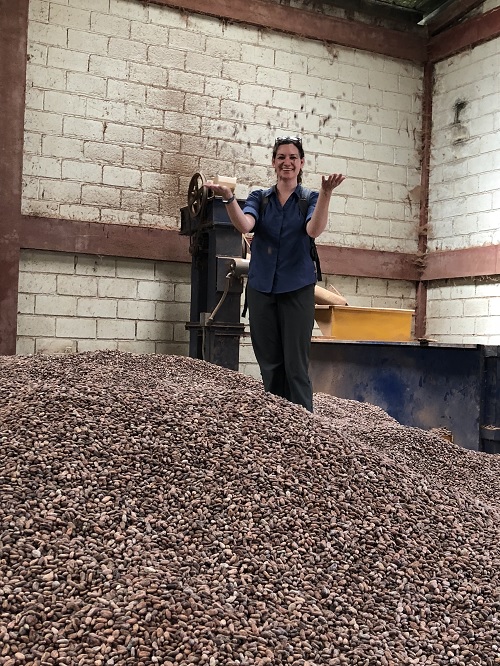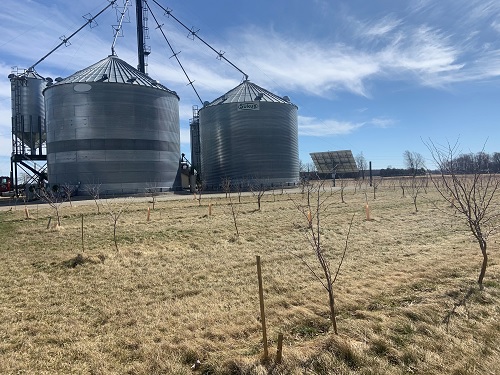While much of Canada’s food and beverage industry has been hit by disruptions caused by the pandemic, the country’s chocolate processors and hazelnut producers hope to benefit from a combination of consumer indulgence and a growing “buy local” trend.
“Chocolate and hazelnuts are two delicious things that go very well together,” says Erica Gilmour, owner and bar smith at Hummingbird Chocolate, in Almonte, Ont., conceding Italy has perfected the combination of the two ingredients with its world-famous Nutella spread.
“We are one of the few ‘bean to bar’ chocolate makers in Canada, which means we don’t purchase chocolate that is already made – we import our own cacao beans and make it all from scratch. If we could add Canadian nuts to our product recipes, that would make a lot of business sense for us.”
The pandemic has opened the door for Canadian chocolate makers with new consumer demand for local, convenient, healthy and sustainable foods. Dark chocolate and hazelnuts are part of this select list of powerful foods that consumers are considering for their benefits in reducing the risk of heart disease and as antioxidant-rich foods.
Canada imported 10 million kg of hazelnuts in 2020, mainly from Turkey, showing a 25 per cent increase from the previous year. The value of hazelnut imports was $105.8 million in 2020.
Several visionary producers in Ontario have started planting hazelnut orchards. Kevin Hodge is one of them. Hodge is a cash crop producer in Burford, Ont., and he chose hazelnuts to diversify his production.
“I started my hazelnut orchard in 2018, so it will start being profitable in about 10 years,” says Hodge. “I should be retired by then, but I have four children and they all like Nutella. I hope one will take over the hazelnut production and make money out of it. One day we may see the mention “made with Canadian hazelnuts” on Ferrero or Nutella’s label. That is my dream.”
“I think the demand is there; we just have to figure out how to tap into it,” says Hodge. “Canadian farmers are famous for producing quality raw ingredients, but we tend to sell our commodities on the wholesale market and processing takes place outside of Canada. It would be nice to be able to retail our end-products ourselves.”
Hodge is a member of the Ontario Hazelnut Association that wants to promote the brand “Hazelnuts Ontario.” The Association is working on the marketing plan right now. There is no established market for the moment simply because Canadian production is not there yet.
“I didn’t know until recently that we grow hazelnuts in Canada,” says Gilmour. “As a company that is always trying to find local ingredients, we would make quite an effort to source hazelnuts grown in Canada.”
According to the Farm Credit Canada (FCC) Food and Beverage Report published in March 2021, shifts in demand and increased production costs have challenged profitability for the sugar and confectionery industry, and 2021 should be sweeter with the re-opening of food service businesses. Consumers are also looking for indulgence foods after going through various lockdowns. FCC projects sales to increase in this sector by 12.3% in 2021 (3.7% above 2019).
Healthy eating is expected to continue in 2021, but indulgence is also a major trend. The combination of healthy and premium ingredients can introduce differentiation and offer interesting niche markets. Product development and marketing can be reassessed to support consumers’ balanced approach to eating.
According to a survey conducted by FCC in January 2021, when asked if their behaviour has changed since the start of the pandemic, six out of 10 people or 58 per cent said they are more likely to buy Canadian made or grown food, 56 per cent are more likely to look for Canadian made or grown food when they buy groceries and 50 per cent are more likely to think about how their food is grown.
“With the local food movement, I think consumers will be willing to pay a premium price for local hazelnuts simply because they’re Ontario grown and not imported. At least it is my hope,” adds Hodge.
Fun facts on hazelnut production:
- Each tree produces five to 15 pounds of hazelnuts per year.
- Hazelnut trees cross pollinate themselves and the harvest is at the beginning of September.
- It takes seven years for a tree to be in full production state.
- Once mature, a tree will hopefully be productive for decades.
- After harvest, the broken shells are marketed as organic mulch.


Source : FCC